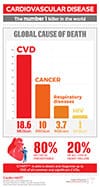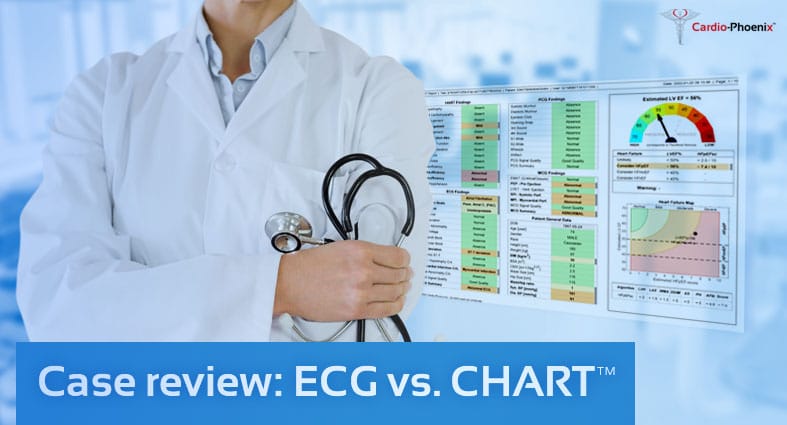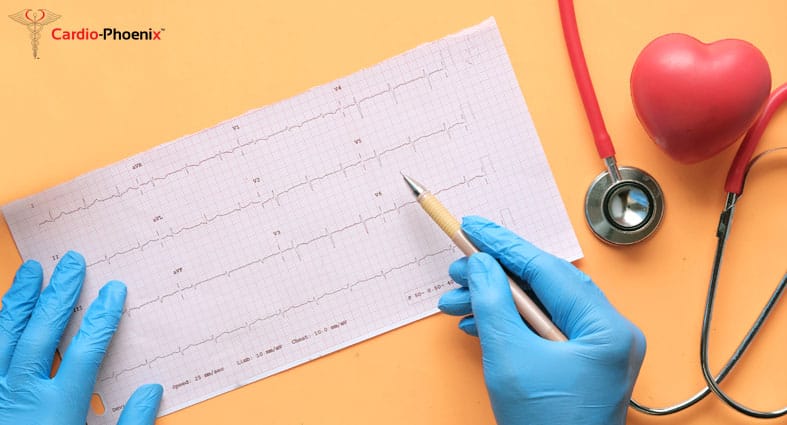As we cautiously emerge from the grips of the pandemic, so too heart disease is re-emerging as the leading cause of disease burden in England. Numerous studies and research articles bear witness to what will undoubtedly be COVID-19’s ongoing legacy, an increase in heart disease of epidemic proportion, to regain the crown as the #1 Killer.
And with this new king, also the old king, the burden of heart disease will fall mainly on the shoulders of secondary care. Already stressed with backlogs of epic proportions, the system is buckling, the new choke point being Echocardiography confirmation services for heart disease. Although there were signs the system was stressed before the pandemic, COVID-19 pushed it over the edge.
Backlogs of 3000 patients are not uncommon in many regions of England, with wait times no longer measured in weeks, but in many months, with access to cardiology toppling the year mark. For patients in need of Echocardiography confirmation to confirm their condition and access treatment, it’s a dark time filled with anxiety and fear.
Excess cardiovascular mortality due to the pandemic
has been observed globally, and clinicians need
to consider an immediate solution to meet the backlog
of patients on the waiting list to undergo
lifesaving interventions, treatments, and care.
as said by Dr Sonya Babu-Narayan, associate medical director at the BHF and a consultant cardiologist.
Clearly, the old ways are not working. Needed is a technological innovation in heart disease diagnostics for use in patient point of care settings, point of entry for access to healthcare, where the patient first presents with symptoms of heart disease.
The unlikely hero, the general practitioner (GP) armed with a technological breakthrough in cardiac-diagnostics – Cardio-HARTTM.
Professor Stephen Powis, the NHS medical director, said:
The NHS is always keen to utilise groundbreaking technology
to provide better care for people with heart disease.
By supporting the most promising new innovations,
the health service will continue to evolve,
meet the needs of more patients
and encourage innovators to come forward
with ideas that can make a difference and transform people’s lives.
Currently, GP’s using their instincts and experience are armed only with ECG devices. As a result, they struggle to diagnose heart disease, as if one hand is tied behind their back. Not surprising as ECG is only able to diagnose 44% of all common heart diseases. This is the main reason Echocardiography (Echo) confirmation is needed, and why it has become the choke point in the NHS. Compounding the problem is that Echo diagnoses different heart diseases that does ECG. It’s like American football and English football, although played on the same field, the games are very different.
Lacking is a device able to provide the missing link for diagnosing a wide range of common heart diseases for use in Surgeries, a device able to provide substantially the same diagnostic functionality as Echocardiography, but for use in Surgeries.
A breakthrough is closer than it appears.
Cardio-HARTTM is a breakthrough cardiac diagnostic system powered by AI for the early detection of 93% of all common heart diseases. Heart disease is never just a single disease…
Cardio-HARTTM provides the diagnostic capabilities of three different medical devices, the ECG, the Echocardiograph, and Auscultation (eStethoscope on Steroids).
Using novel bio-signals that can also capture physiological pathological indicators, Cardio-HARTTM is a non-invasive device that is very safe and easy to use in Primary Care settings.
It’s Echo for Primary Care.
Powered by some very innovative AI, Cardio-HARTTM is the GP’s diagnostic assistant, like a wizards assistant, providing them with critical diagnostic information on a wide range of indicators, that more than doubles the diagnostic capabilities over the use of ECG at the surgery level, capabilities inline with those found in Cardiology. However, it is not a replacement for Echocardiography when it is indicated, but it helps GP’s better determine when a patient needs to be referred to Cardiology.
Cardio-HARTTM can detect Heart Failure and Heart Valve diseases.
It’s a game-changer for Primary Care.
In the capable hands of GP’s, the immediate effect of Cardio-HARTTM will positively impact wait-times and reduce the backlog for Echocardiography confirmation. Wait-times could be reduced to mere days and the backlogs, from Everest to mole hill. If used with immediate effect, it was estimated that the current backlogs could be reduced by half, within weeks.
Cardio-HARTTM is currently being used in select surgeries throughout England. Patients are grateful, and GP’s are astounded at their new hero role, impressed to the point they are permanently removing ECG devices from their surgeries, and exclusively using only the CHARTTM device.
Said one clinical director,
…it does everything ECG does, but much much more…
CHARTTM is clearly ECG with a 21st century make-over.
I cannot see going back to the old ECG devices…
I think we’d be at a big loss if we did.
CHARTTM is a real improvement that has benefited patients.
Dr Sonya Babu-Narayan.
…it is {sic} “heartening” to see innovations
that could fast-track heart diagnoses
and ease workloads so NHS heart patients
could get the best possible care much sooner.
Use Case 1.
Patient A. Male, 56, suffered from COVID-19 induced dizziness 1+ year ago, resulting from AFib and reduced LVEF, 36%. Treated by Cardiology, AFib under control, no dizziness, and LVEF now at 61%.
Unable to get a cardiology appointment within the next 9 months, the patient goes to his surgery.
First ECG is used and is inconclusive, and the assumption is that condition must be related to past problem, as symptoms are similar. But stop! Managing GP, orders use of CHARTTM before a referral to cardiology is made. CHARTTM test reveals the problem is not heart-related, LVEF is 59%, no AFib. With this new information, GP looks for the real source of the problem, it was something else that was easily controllable in Primary Care.
The patient was put on 3 month Watch, to receive CHARTTM test every 3 months. The patient is ecstatic.
He is not alone anymore… He is not waiting…
Had the patient been referred to Cardiology, it would have been on an emergency basis, which was not sooner than one month. Instead, use of CHARTTM meant patient was diagnosed Day-1 on presentation in Primary Care.
With 97.9% confidence that patient’s condition was not heart disease-related, allowed the GP the leeway to look for and identify the real cause of the patient’s condition, and apply the appropriate treatment – with immediate effect. The patient walked out of the clinic treated, in good health.
Had only ECG been relied upon, the standard of care required referral to cardiology to determine if the condition was heart-related. This would have introduced 4-6 weeks of delayed access to treatment. In this use case:
- Time to diagnosis, Same day, Day-1
- Time to diagnosis, delayed 30-60 days to access cardiology, another 1-2 weeks for results.
- Diagnosis in Surgery. NOT heart-related. Look for another cause.
- Diagnosis in Cardiology. NOT HEART-Related. Go back to GP.
- Cost. Visit primary care, billed as a single ECG test.
- Savings. Cost of visit to cardiology and Echocardiography test, interpretation.
- Patient reaction. Ecstatic!
- GP Status: Hero! Still smiling!
Device and report images:
Coming Soon!
In the following weeks, more use cases will be explored.
Next Use Case. Woman, 38, mother of 4, with chest pain in lower left side rib cage, sent home by A&E as ECG was “clean”.
Find out what happened, when still with pain she visits her GP a few days later. Hint: she lives.














